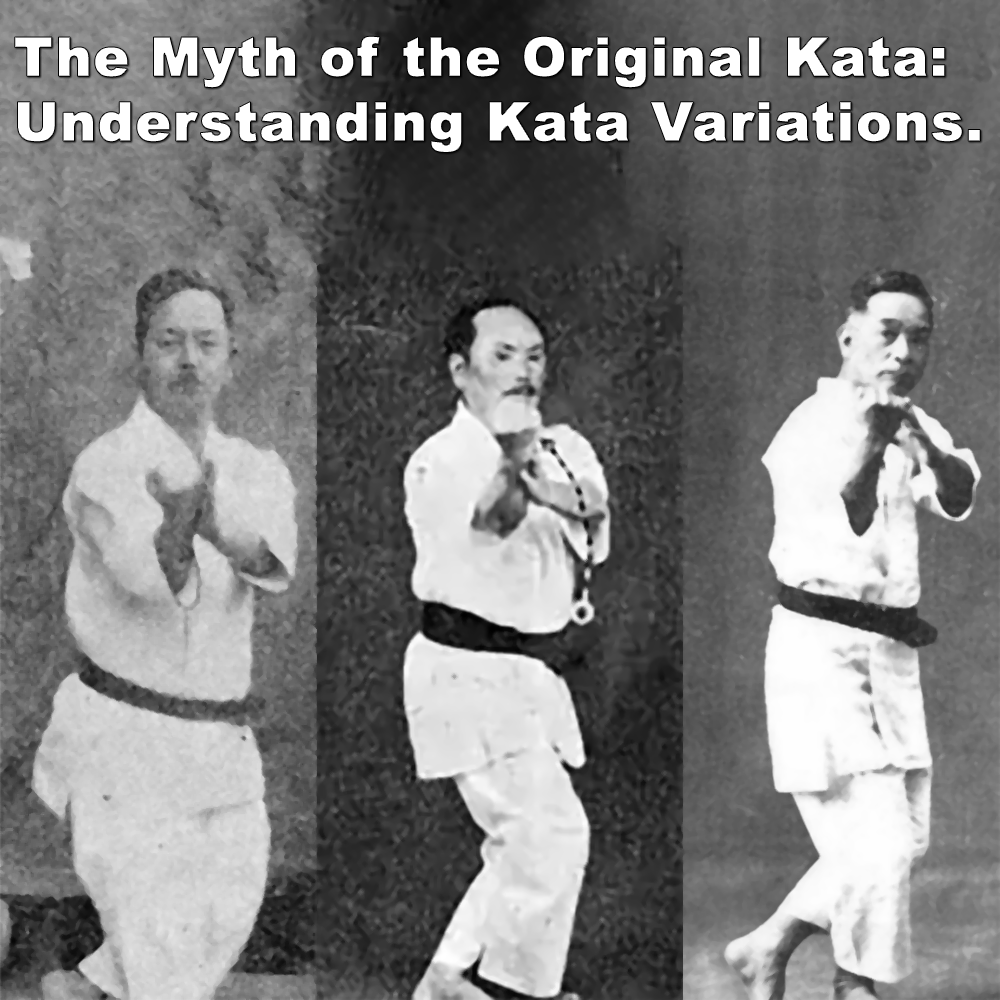
(Approx 1 minute 55 second read)
For many karate-ka, the allure of practicing an ‘original’ kata, untouched by time, is undeniable. But what if ‘original’ itself is a moving target?
.
Today, many instructors claim their kata are pure, unchanged, and passed down from a legendary master. Yet, what exactly constitutes ‘original’?
.
The truth is, we might never truly know the exact movements those ancient forms embodied.
.
Across styles, lineages, and families, variations of the same kata exist. Modification – both subtle and significant – has always been a reality, even if rarely acknowledged.
.
While following a respected lineage is important, clinging to the notion of performing an exact replica of a long-dead master’s technique might be misleading.
.
Why the Changes?
.
Aesthetics could be one factor. The incorporation of flamboyant moves might enhance a kata’s visual appeal for competitions. Another factor is cultural influence. Karate’s integration into educational systems likely shaped its intent, with practical applications taking a backseat.
.
Perhaps diversification was also intentional. Masters might have taught different versions, each emphasizing specific concepts, allowing students to tailor the techniques to their individual strengths and weaknesses.
.
Body types may have played a role too. Adaptations could have been made to accommodate variations in height, build, or even limitations due to injury or disability.
.
Many practitioners focus on the ‘look’ for competition success, potentially diminishing the true essence of kata.
.
While some past and present masters advocated for kata preservation, the reality is every generation introduces changes. Memory lapses and differing interpretations can lead to unintentional deviations. Our understanding largely relies on oral traditions, which by nature are susceptible to alteration over time.
This can result in practitioners performing the same kata with discrepancies, either due to forgotten details, a misunderstanding of its purpose, or simply imperfect observation.
.
I remember when my own aging sensei, many years ago, a man who once seemed to embody these forms flawlessly, came to me to refresh his memory on specific kata. It was a humbling reminder that even the most dedicated practitioners grapple with the challenges of preserving tradition through memory alone.
.
Thankfully, the landscape is shifting. Today, with the advent of video recordings and social media, we have powerful tools to maintain a more consistent record of kata. These resources allow practitioners to compare variations, delve deeper into historical footage, and ensure a more accurate transmission of these forms to future generations.
.
The landscape is filled with a multitude of kata interpretations, each reflecting a different lineage or school. So, the question arises: are any truly ‘original’? Perhaps not. But that doesn’t diminish the value of practicing them.
.
Understanding the history behind the variations can deepen your appreciation for karate as a whole and hopefully inspire you to explore its underlying principles.
.
Are your kata original?
.
.
Photo Credit: Kenwa Mabuni, Gichin Funakoshi, Choshin Chibana
.
